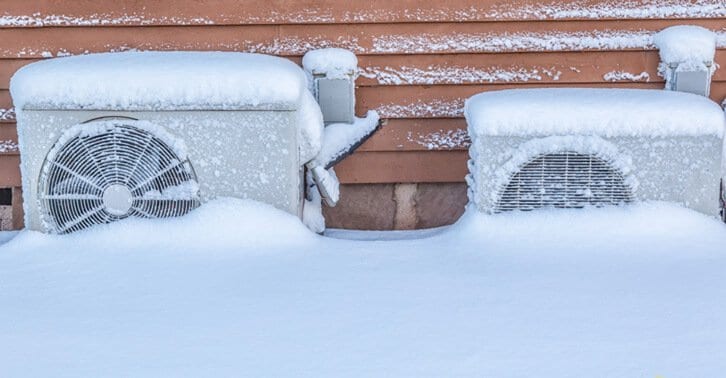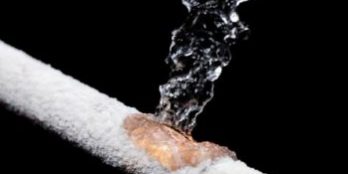How to Handle a Frozen AC Pipe: Comprehensive Guide
How to Handle a Frozen AC Pipe: Comprehensive Guide
Blog Article
This article in the next paragraphs pertaining to What Do I Do If My AC Pipe Is Frozen is indeed stimulating. Don't overlook it.

Introduction
Finding that your a/c pipeline is iced up can be concerning, specifically throughout warm summer season when you depend on your ac unit one of the most. Understanding what to do in such a scenario is important to stop further damages to your cooling system and guarantee your convenience indoors.
Comprehending the Causes
Several aspects can contribute to the freezing of an air conditioning pipeline. Recognizing these reasons can aid you resolve the concern efficiently.
Lack of Airflow
One typical reason for a frozen air conditioning pipe is inadequate airflow. When the air movement over the evaporator coil is restricted, it can trigger the coil to go down below freezing temperature level, causing ice development on the pipe.
Low Refrigerant Levels
Inadequate refrigerant degrees in your AC system can also result in a frozen pipeline. Reduced cooling agent levels can cause the pressure in the system to go down, resulting in the freezing of moisture on the evaporator coil.
Winter Conditions
In cooler climates, freezing temperature levels outside can contribute to the cold of a/c pipes. If your air conditioner system is not properly shielded or if there are leakages in the ductwork, chilly air can penetrate the system, triggering the pipeline to freeze.
Dirty Air Filters
Unclean or blocked air filters can limit airflow in your a/c system, leading to different problems, consisting of an icy pipeline. It's important to change or clean your air filterings system on a regular basis to make certain proper air movement and avoid ice build-up.
Indications of a Frozen A/c Pipe
Acknowledging the indicators of an icy air conditioning pipeline is important for prompt action.
Minimized Airflow
If you discover a substantial reduction in air movement from your vents, it can show an icy pipeline.
Ice Buildup on the Pipe
Noticeable ice build-up on the refrigerant line or the evaporator coil is a clear indication of a frozen air conditioner pipe.
Weird Sounds from the Unit
Unusual audios, such as hissing or bubbling, originating from your AC unit can signal that there's ice present on the pipeline.
Immediate Actions to Take
When faced with an icy air conditioning pipe, it's essential to act swiftly to prevent additional damages to your air conditioning system.
Turning off the air conditioner
The initial step is to shut off your a/c unit to stop the system from running and exacerbating the problem.
Checking for Blockages
Inspect the area around the indoor system for any type of obstructions that may be blocking airflow, such as furniture or curtains.
Thawing the Pipe
You can use mild approaches like placing towels taken in cozy water around the icy pipe to aid thaw it gradually.
Safety nets
Taking safety nets can assist stay clear of future incidents of a frozen AC pipeline.
Regular Maintenance Checks
Set up routine maintenance talk to a professional HVAC professional to make certain that your AC system is running efficiently.
Altering Air Filters
Regularly replace or cleanse your air filters to prevent airflow limitations and preserve optimum efficiency.
Protecting Exposed Pipes
If your a/c pipes are revealed to chilly temperature levels, consider shielding them to stop cold during winter season.
Seeking Professional Help
If DIY approaches fail to solve the concern or if you're unclear about just how to proceed, it's finest to look for support from a qualified HVAC professional.
When DIY Methods Fail
If your efforts to thaw the pipeline or address various other concerns are not successful, it's time to hire a specialist.
Importance of Hiring a Professional HVAC Technician
A licensed HVAC specialist has the proficiency and devices required to detect and fix problems with your air conditioning system securely and successfully.
Final thought
Managing an icy a/c pipeline can be a discouraging experience, yet understanding exactly how to react can assist lessen damage and restore comfort to your home. By recognizing the reasons, recognizing the signs, and taking prompt activity, you can successfully resolve the concern and avoid future occurrences.
Frozen AC Line: Why It Happens & What To Do About It
A frozen AC line can be a rather peculiar sight in a place like Phoenix, Arizona where nothing ever freezes. In this post, we’ll discuss what makes an air conditioner line frozen – and what you can do about it.
Dirty Air Filters
Did you know that you should be cleaning or replacing your air filters on a monthly basis? Failing to do this can result in airflow issues that, in turn, cause your evaporator coils and lines to freeze over. You’ll notice a buildup of ice on both components, although the buildup on your pipes will, of course, be more evident unless you open your air condition up to reveal the coils.
What To Do About It
Give your air filter a good cleaning if it’s reusable. If not, replace the filter outright. Next, switch your air conditioner’s fan setting on and leave it there for 2-3 hours. This will draw warm air in, helping to thaw your evaporator coil. You can also check out this article for some tips on cleaning the coils themselves if you’d like to speed the process up. Before you switch the unit back to its normal state, make sure the supply vents are completely unobstructed and free of dust or other debris.
If you keep having this issue even after replacing your filters regularly, contact a local HVAC repair company and have them inspect your evaporator coil, ductwork, and any other components that may be at fault. If you live in the Phoenix, Arizona area, give American Home Water and Air a call.
Low Refrigerant Levels/Leakage
What To Do About It
Contrary to what air conditioner “recharge” companies often tell their clients about refrigerant, it should never need to be simply refilled. You see, refrigerant runs in what experts refer to as a “closed loop.” Refrigerant really shouldn’t be leaving that loop. If it is, you’ve got a leak.
Paying someone to come and pump more refrigerant into your system (aka “recharge” it) isn’t the solution. Doing that will simply kick the can down the road. Besides, refrigerant leaks can be harmful to the environment and people in your home.
Rather, you need to take care of the leak with the help of a technician. Check out this article for some more information about dealing with air conditioners that are leaking refrigerant. Before you contact a technician, switch your thermostat to the off position. Then, switch the fan setting on and let it run for 2-3 hours so the unit can thaw.
Improper Temperature Setting
Improper temperature settings can also cause a drop in your air conditioner’s pressure. What many people don’t realize is that air conditioners are actually designed to run when temperatures have fallen above roughly 60 degrees Fahrenheit. If you run the unit when it’s cold outside, you’ll run into many issues, including frozen components.

Do you enjoy reading about Have a Frozen AC Line? Here’s How to Fix It? Try to leave a comment down the page. We would be interested to listen to your opinion about this review. In hopes that you come back again in the near future. Remember to set aside a second to distribute this content if you enjoyed it. Thank you for your time. Kindly come visit our blog back soon.
Book A Service Report this page